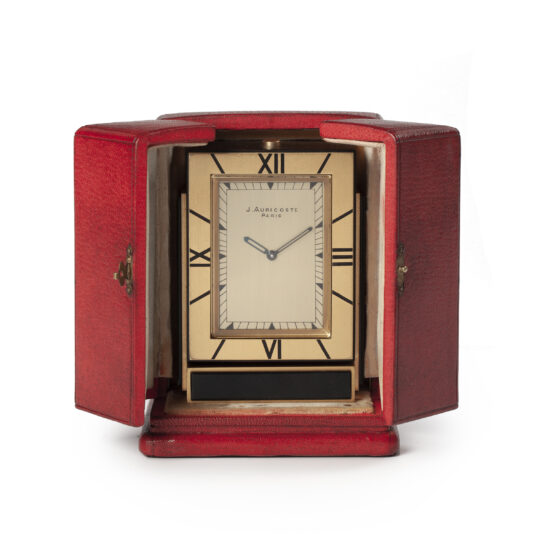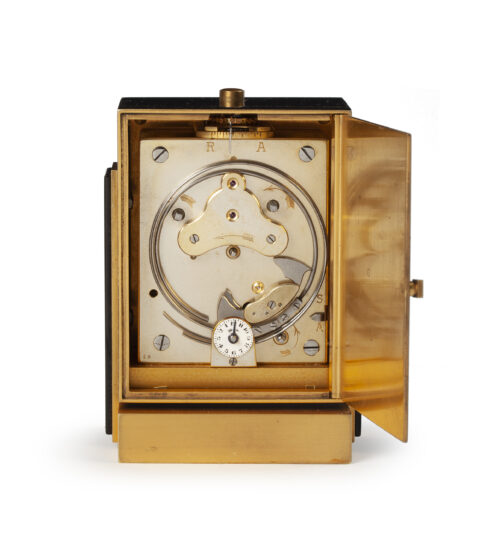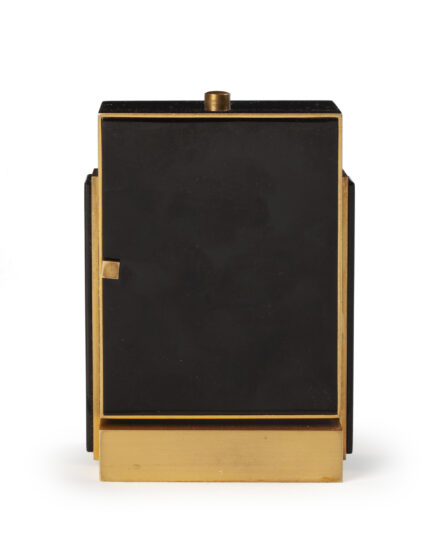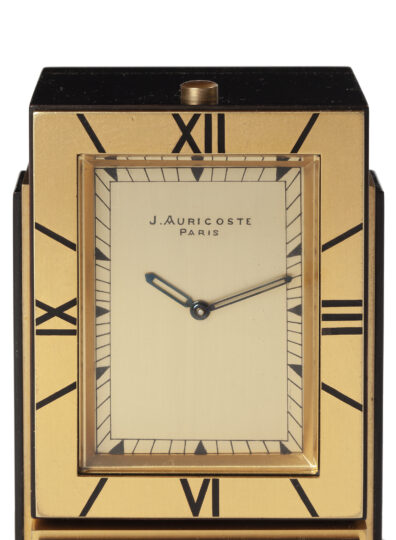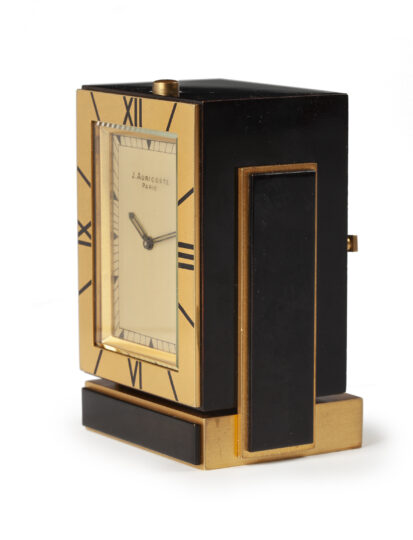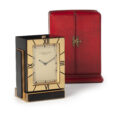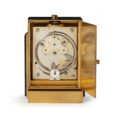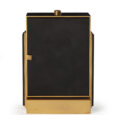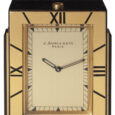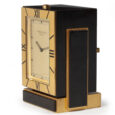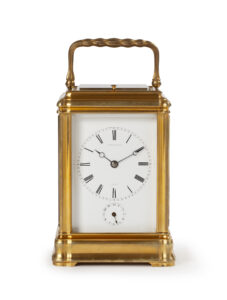ART DECO CARRIAGE CLOCK Signed: J. Auricoste Paris Ca. 1920
M&R102
ART DECO CARRIAGE CLOCK WITH TRAVELLING CASE
Signed: J. Auricoste Paris
Circa 1920
France
Movement
The clock has a spring-driven brass plated movement with a platform lever escapement, balance and regulation. The striking train indicates the time according to the ‘grande-sonnerie’-system, i.e. the hours and each quarter the hours on one gong and quarters on two gongs. In addition, the movement has minute repetition, sounding the hours, quarters and minutes last struck at will by pushing a brass button on top of the case. The alarm can be set and the back side on the small white enamelled dial. The three trains are spring-driven and have on the back the winding squares. On the back there is also the hand setting square and the switch for the striking train S / A.
Dial
The rectangular silver-plated dial has triangles as hour and five minute markers and stripes for the other minutes. The dial is signed J. Auricoste Paris. The stylised hour and minute hands are made of blued steel and the dial is covered by glass. The dial has a gilded edge with the black hour numerals III, VI, IX and XII and stripes for the other hours.
Case
The gilt-brass case has stepped panels painted in black to the sides, decorated with black onyx. All aspects of the case remind of the style developed by Cartier at the heyday of the Art Deco period. The movement can be accessed via a door at the back, behind which is the backplate.
Travelling case
The original wooden travelling case, which protects the clock during transport, has a cream coloured lining and is covered on the outside with red leather. It can be opened at the front via two doors which are locked by one delicate clasp. On the rear inside the case is signed J. Auricoste Paris and in the bottom is a storage for the winding key.
Duration 1 week.
Height 10.5 cm
Width 7.5 cm
Depth 5.5 cm.
Travelling case
Height 13.5 cm
Width 10.5 cm
Depth 8.5 cm.
Literature
Tardy, Dictionnaire des Horlogers Français, (Paris, 1972) p. 18.
A similar movement is depicted in:
Ch. Allix, Carriage clocks, (Suffolk, 1974), p. 322,
The maker
Jules Auricoste was working in Paris . He was the successor of E. Thomas. Rue La Boëtie. In 1910 he filed the trademark: Excelsior.

